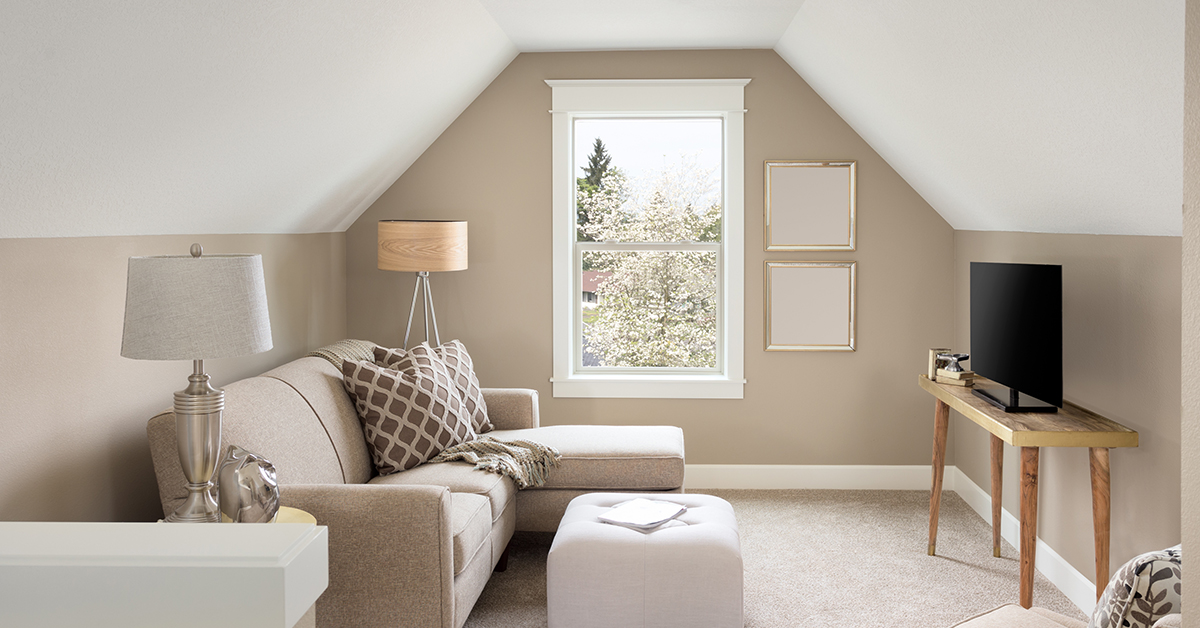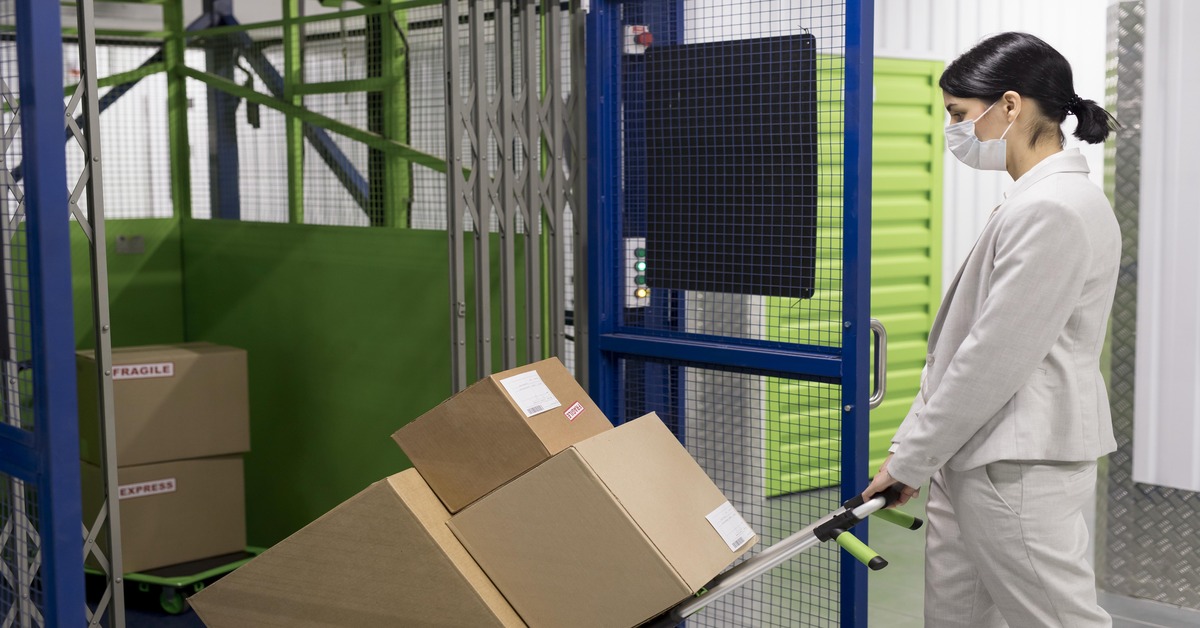Table of Contents
Moving to a smaller home can be a refreshing change, offering a chance to declutter and simplify your life. However, downsizing requires careful planning and organization. One of the first steps is to explore various storage options that can help you manage your belongings effectively. Self-storage units are an excellent solution for items you want to keep but don’t have space for in your new home. They offer flexibility and security, ensuring your possessions are safe.
Box storage is another practical option, perfect for smaller items that you want to keep organized and easily accessible. Utility lockers are ideal for storing seasonal items, tools, or equipment that you don’t need daily but still want to have on hand. As you prepare for the move, focus on decluttering your current home. Sort through your belongings and decide what to keep, donate, or discard.
By utilizing efficient storage options like self storage, box storage, and utility lockers, you can make the transition to a smaller home smoother and less stressful. Embrace this opportunity to create a cozy, clutter-free living space that truly reflects your needs and lifestyle.
Getting Ready for Moving to a Smaller Home
Step1: Make an Inventory List
Take a closer look at everything you have at home. Open out every cabinet and every drawer. Examine the contents closely. Only when one needs to pack and move does one realise how much junk one has collected over the years? This could include impulsive online buys, left-over party decorations, half-used birthday candles, tons of take-out cutlery, broken objects you intended to mend, torn clothes you intended to darn, worn shoes that you forgot to fix, old chargers and even older mobile phones, newspapers, stationery, and a bunch of bric-a-brac that you do not even recognise!
There are two ways to make an inventory list. You could just go from room to room with a notepad, writing down the names of everything the room contains. The other option is to take pictures of everything and then organise them into folders labelled according to the room. This way, you even have a visual track of the item to jog your mind later when you ask yourself why you got rid of it. Once you have the list of items, you must break it down into smaller lists that help you decide what to take to your new home and what to do with the rest.
Moving to a smaller home is easier, it’s essential to make an inventory list of your belongings and decide which items to keep, donate, sell, or store in a self-storage unit.
Step 2: Declutter Your Space
Making an inventory list of all your possessions will bring to light just how many unwanted and unused items you have lying around your home. You may not want to throw them all out because some of them may have special sentimental values even if they are obsolete now. There may be other items that you spent too much and hence cannot bring yourself to toss into the garbage. Before you decide what to do with all these excess items, first make your smaller lists.
List #1: Essential Items to Bring to Your New Home
Look at the inventory list you have made. Go through the pictures you have clicked, and now pick out the items that you need. Start with furniture because they are the heavier items. Move on to gadgets and home appliances. Then, look through books and stationery. Next, sort through your kitchen cabinets. If your wardrobe is bursting with clothes, decluttering your wardrobe will be a separate step. Remember that this list is only for items that you need.
When moving to a smaller home, it’s important to prioritize the items you need to take with you, such as essential furniture, appliances, and personal belongings, and find a suitable self-storage unit for the rest.
List #2: Items to Put In Storage
Renting out a self-storage unit is a smart decision. This way you get to take only what you need to your new home, and you still get to keep some of the stuff you rarely use but want to keep anyway. Self Storage India offers 24/7 security, so you can rest assured your possessions are safe. The size of the storage unit you rent out depends on how much of things you need to put away. If you cannot figure out how big a space you need, then you can always call in our experts.
After making a list of items that you need to take to your new home, you now need to look at the remaining items on your inventory list. From this list, you need to pick out items that you do not want to sell or get rid of. Items that you use seasonally can also go into storage. For example, Christmas decorations come out only in December. They can be neatly packed and put into storage. Travel luggage that you use only when you take long vacations, is bulky and could take up too much space at home, you can put them away in storage. Since you can access the storage unit at any time, these items are always available to you.
Consider putting seasonal items, heirlooms, collectibles, and other non-essential belongings in a self-storage unit when moving to a smaller home to help you declutter and maximize your living space.
List #3: Donate Few Items
Besides clothes, some of the best items to donate are children’s belongings. New and first-time parents tend to get overzealous and load up on baby gear that their baby may use just once or at all. For most people, getting rid of items related to their children is the toughest to do, while seeing them gathering dust can also be heartbreaking. Keep one or two items and donate the rest. This includes toys, clothes, towels, footwear, books, and stationery. Knowing that some other child is benefitting from your things helps deal with the guilt you feel when you give away your baby’s things.
Clothes and footwear you have worn but are in good condition can also be given to someone in need. Bedlinen and decor that you do not want to carry into the new place and that you know you will never take out of storage can also find use in someone else’s home. Anything you have used and will not use anymore can be given away. Make a list of all these items and then decide to whom or what charity you are going to give them away.
As you prepare to moving to a smaller home, consider donating items that you no longer need or use, such as clothes, books, and furniture, to local charities or non-profit organizations to reduce clutter and make a positive impact on your community.
List #4 Items to Sell
If you have items still in mint condition, you could consider selling them. You could either create a garage sale or sell your things online. Today, there are several platforms that make it easy for anyone to stay home and sell their things with ease. Online payment options ensure that you get paid right away too. Research the different online marketplaces available, find out how they work and pick the one that benefits you the best.
You can sell anything online – toys, clothes, shoes, books, gadgets, electronic goods, furniture, etc. The key is, to be honest about the condition of the goods you sell. One review from an unhappy customer and no one will come back to you.
Selling unwanted or duplicate items can also help you offset the cost of moving and storage fees when moving to a smaller home.
Tips to Win Over Buyers:
- Take pictures of the product you are putting up for sale, from all angles.
- Mention its dimensions and weight.
- For clothes, be specific about their size.
- State when you bought it and if you have used it at all.
- Give the reason for the sale.
- If it is a used item and has signs of wear and tear, mention the same.
- For bulky items that cannot be couriered, specify whether the item needs to be picked up by the buyer. If you are offering to deliver, state delivery charges.
- Mention clearly if you are not selling to outstation customers.
- If you have a No Returns Policy, specify the same.
- Once an item is sold, take it offline immediately.
List #5 Items to Throw Away
Once you are through with the previous four lists, if you still have items in your inventory list, these are things you do not need. These are broken or worn-out items that you can neither sell nor give. Look at them carefully and reassess their value. If you still cannot find a place for them on your other lists, then bag them and dispose of them as trash. Items that are broken and you have never been able to find time to fix have been replaced with functional counterparts. Just throw away the broken goods. If you know someone who will fix it and use it, then maybe put it on List #3.
When moving to a smaller home, it’s important to discard damaged, broken, or expired items, such as old electronics, expired medications, and worn-out clothing, to avoid cluttering your new living space.
Step 3: Plan the Placements of Items
Now that you know what you will be taking to your new home, the next step is to decide where the items will go. For this, you will need to have the floor plan of your new home handy. You do not need the builder’s actual floor plan. You could just take a picture of the new place, measure the rooms, and then draw a simple one yourself. The idea is to be aware of how much space you have and accordingly decide on the best way to use it.
Make sure that your current furniture will fit in the new space. Furniture must be placed around the house in such a way that there is ample space for you to move around. In this step, if you realise you will not have space for all your furniture, you could pick a few to put away in storage. You could use your furniture on rotation. This way, you will get to use all your furniture without cluttering your house, and you will also get to give your house a fresh look from time to time. Take the minimalist approach to decorating and furnishing the house. Not only will it make your smaller new home look more spacious, but it will also be easier to maintain. The lesser the clutter, the easier it is to clean.
By planning the placement of your items before moving to a smaller home, you can save time, reduce stress, and create a functional and organized living space that meets your needs and lifestyle.
When you are moving into a smaller place, your current furniture might be too bulky. Rather than cramming it into your new house, you could put away some of it in storage and invest in space-saving furniture. Here are a few smart options:
- WALL DESK: Wall desks double as both a work surface and a place to sit down. They are perfect for those tight spaces where there is no room for a full-sized desk.
- MULTIUSE TABLE: A drop leaf table is one of our favourite pieces of furniture because it allows you to expand the size of your living area without having to buy anything else. You can use it as a coffee table, sideboard, or even a dining table.
- CONVERTIBLE SOFA: If you do not have a guest bedroom, a sofa-cum-bed is a good option.
- WALL BED: A wall bed is a viable choice for the kids’ room. Put the bed up and it doubles as a study or toy room.
- FOLDABLE FURNITURE: Invest in furniture that can be folded and put away when in not use.
- FURNITURE WITH BUILT-IN STORAGE: Beds come with storage drawers fitted in, which you could use to tuck those big blankets in. Likewise, sofas come with storage spaces for books, magazines, and remote controls. If they are not bulky pieces, you could consider buying them.
Step 4: Get Ready to Pack and Move
Even if you are hiring professional packers and movers, getting a head start on things is always best.
Start by putting the things to donate in separate boxes. Consult your list and get enough boxes to pack them in. Give them away as soon as possible to make room for more boxes.
Organize everything you are going to sell in one single spot in the house. Get packaging materials for items that you need to pack and courier to the buyer. Make sure the items are securely packed so that they will not sustain damage during transit.
Get appropriate boxes and packaging material for all the items going into storage. Given that they are likely to stay in storage for months on end, ensure that all goods are clean and dry. Dampness can lead to mould build-up. Ask someone from the storage facility for assistance if required. Storage experts at Self Storage India will ensure your goods are safe and secure.
Buy boxes of varying sizes. Large boxes are best suited for clothes, bed linen, curtains, towels, footwear, handbags, pillows, and cushions. Go for medium-sized boxes for books, files, and papers, but do not cram too much in them; the box will become too heavy to move around and can give way. Small boxes can be used for small items around the house.
Place heavier items at the bottom of the box. Fill gaps with cloth or Newspaper to ensure the items do not move around and get damaged during transit.
Glassware and sharp objects need to be wrapped and handled with care. Special cardboard boxes are available for them; investing in a few will keep you stress-free.
– Moving blankets, bubble wrap, cling wrap, and high-quality tape are some of the most important packaging supplies you will need to have in one hand.
Label all the boxes you pack. The label should mention the room to which the contents belong. This ensures the movers place the boxes in the right place in your new home and reduces the need for you to drag heavy boxes around while unpacking.
Step 5: Prepare Your New Home
In all the chaos of decluttering and packing, one tends to forget to visit the new place to make sure it is all prepped and ready for new residents. Before moving day arrives, take the time to visit your new home and make sure it has everything you need to make a smooth transition from your old place.
- Make sure the house is thoroughly cleaned.
- Check the water supply.
- Give the plumbing another inspection.
- Ensure that the electricity is up and running.
- Set up the internet ahead of the move if your work depends on it.
- Book pest-control services a few days before you move in. An empty house will suit them perfectly, and you will not have to deal with chemical fumes.
Final Words
In conclusion, moving to a smaller home can be a rewarding experience when approached with careful planning and organization. By exploring various storage options like self-storage units, box storage, and utility lockers, you can effectively manage your belongings and create a clutter-free living space. Decluttering before the move helps you focus on keeping only the essentials, making the transition smoother.
Remember to label and categorize your items for easy access in your new home. Embrace this opportunity to simplify your life and enjoy the benefits of a cosier, more manageable living environment. With these essential tips, you can make your move to a smaller home a successful and stress-free journey.
FAQs
A: Begin by decluttering your current home. Sort your belongings into categories: keep, donate, or discard. This helps you reduce the number of items you need to move.
A: Consider self-storage units for larger items, box storage for smaller belongings, and utility lockers for tools and seasonal items.
A: Ask yourself if the item is essential, used frequently, or has sentimental value. If not, consider donating or discarding it.
A: Self-storage provides a secure place for items you want to keep but don’t have space for in your new home, making the transition smoother.
A: Box storage helps organize smaller items, making them easy to find and access in your new home. It also saves space and keeps your belongings tidy.
A: Clearly label each box with its contents and the room it belongs to in your new home. This makes unpacking more efficient and less stressful.
A: Use sturdy boxes, wrap fragile items carefully, and pack heavier items at the bottom. Label each box and group similar items together.
A: Use multifunctional furniture, maximize vertical space with shelves, and keep your new home organized to create an open and airy feel.
A: Consider using self-storage for items you want to keep but can’t fit in your new home. Alternatively, you can donate or sell items that you no longer need
 Contact Us
Contact Us
Our Storage experts will get in touch with you.





